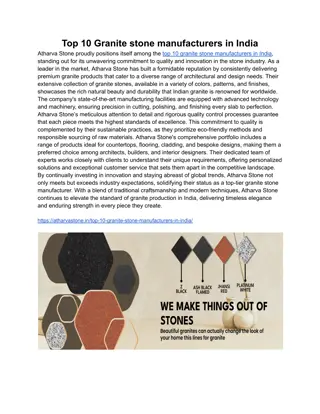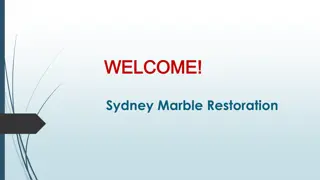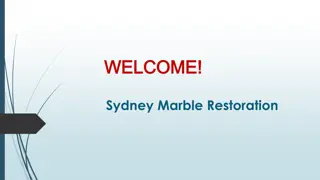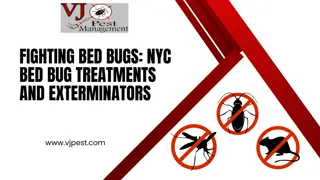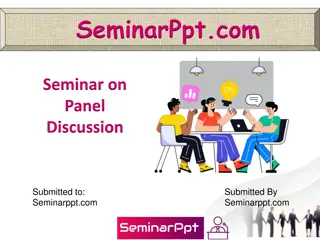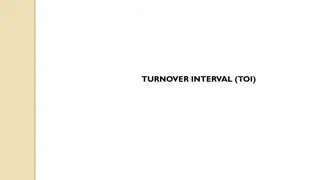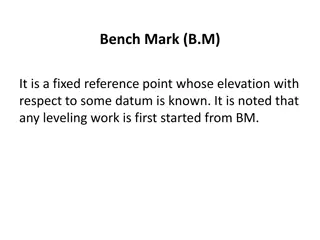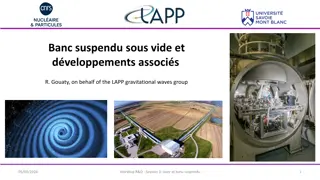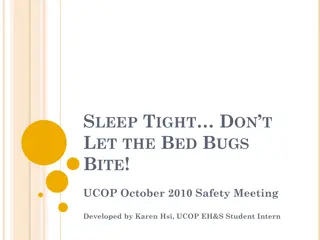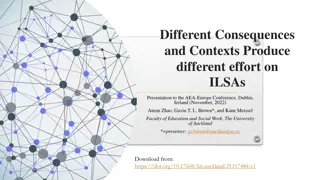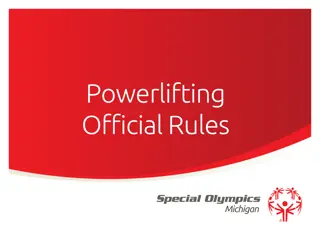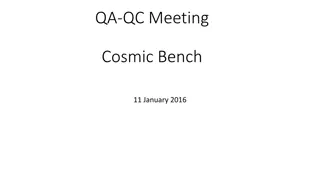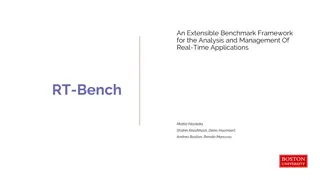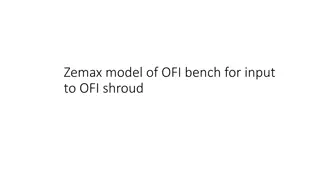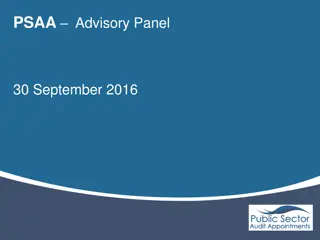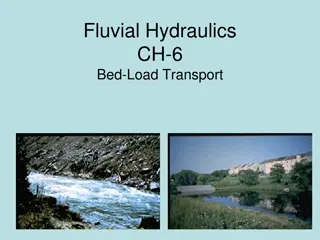
Longitudinal Qualitative Study on Technology Development and Transfer Projects by NIDILRR Grantees
Explore the ongoing qualitative study by the KT4TT Center at the University at Buffalo, focusing on the technology development and transfer projects of NIDILRR grantees. The study aims to identify barriers, facilitators, and best practices in the translational process, using the Need-to-Knowledge (NtK) framework. Participants include principal investigators of NIDILRR-funded projects, providing valuable insights into the technology transfer process.
Download Presentation

Please find below an Image/Link to download the presentation.
The content on the website is provided AS IS for your information and personal use only. It may not be sold, licensed, or shared on other websites without obtaining consent from the author. If you encounter any issues during the download, it is possible that the publisher has removed the file from their server.
You are allowed to download the files provided on this website for personal or commercial use, subject to the condition that they are used lawfully. All files are the property of their respective owners.
The content on the website is provided AS IS for your information and personal use only. It may not be sold, licensed, or shared on other websites without obtaining consent from the author.
E N D
Presentation Transcript
A prospective study of the translational process in the technology development and transfer projects of NIDILRR s technology grantees: a qualitative study in progress Presenter: Vathsala Stone vstone@buffalo.edu Center on Knowledge Translation for Technology Transfer (KT4TT) University at Buffalo, NY http://sphhp.buffalo.edu/cat/kt4tt.html Presented for the panel - Bench to Bedside and Beyond AEA Annual Meeting, November 10, 2017
Fig. 1. The Study Context: ACL/NIDILRRs Knowledge Translation (KT) Framework focused on Technology Innovation and Use (Summary View)
Fig. 2. Need-to-Knowledge (NtK) Model: Three Methods generate Three States of Knowledge (Lane & Flagg, 2010)
An Operational Need An Operational Need- -to to- -Knowledge (NtK) Model An Operational Guide to KT for TT An Operational Guide to KT for TT (Lane & Flagg, 2010) Guide Guide to KT for TT to KT for TT (Lane & Flagg, 2010) http://sphhp.buffalo.edu/cat/kt4tt/best-practices/need-to-knowledge- ntk-model.html (also see Fig. 2 - handout) Knowledge (NtK) Model Need-to-Knowledge (NtK) Model: An Operational Guide to KT for TT (Flagg, Lane & Lockett, 2013) Model description Two roles in managing the KT4TT process Tool for planning: Technology Transfer Planning Template (TTPT) https://sphhp.buffalo.edu/cat/kt4tt/projects/development- projects/technology-transfer-planning-template.html Tool for assessing/tracking KT4TT process (see Fig. 3 -handout)
Fig. 3 Tracking implementation of KT4TT through NtK Stages, Steps & Gates*
Longitudinal Qualitative Study at the KT4TT Center Focus: NIDILRR Grantees technology development and transfer processes Approach: Capture Grantees translation stories by tracking their project processes from start to end, using the NtK framework as the basis Objectives: Uncover and document barriers and facilitators, in Grantee processes. Refine & contextualize the NtK model using newly identified Best practices.
Longitudinal Study at the KT4TT Center: Study Design Participants: PI s of NIDILRR s (technology)development (D) projects: funded in 2013 & 2014 Enrolled Volunteer Participants Grant Type Duration # of Cases (D Projects) RERC 5 yrs. 10 DRRP 5 yrs. 1 FI 3 yrs. 6 SBIR II 2 yrs. 2 TOTAL 19 Design: Prospectively follow the participant D Projects ( Cases ) Collective Case Study (Stake, 1995; 2003)
Method Baseline: Review grantee proposal & technology transfer (TT) plan basis: NtK stages, steps and gates Follow up: Quarterly telephone interviews with PI (beginning to end of grant) Questionnaires on applicable NtK-steps and gates PI feedback on transcribed summary Analysis: Code and analyze data (PI responses) in NVivo 10 Compile findings: Visual Map of (Grantee process X NtK steps and gates) to compare patterns; (See Fig. 3) Organize Barriers and facilitators in emerging categories; Individual Case report PI feedback Collective Case Study report
Current Status Completed: 3 case reports All data collection for 9 cases Ongoing: Data collection (Interviews) for remaining 7 Cases; Analyze (Code, query, organize) & Compile findings for 9 reports Project implementation pattern mapped on to Ntk model Categorize Best Practices, Barriers, and Facilitators Next Steps: Follow any remaining project(s) to the end of their grant cycle & complete reports Collective Case Study Report Recommendations to Grantees; Inform policy (NIDILLR).
REFERENCES 1. ACL/NIDILRR (2017). Draft Long-Range Plan for the period 2018-2023. PDF Document for public comments (pp.1-33). Retrieved through NIDILRR-announcements@naric.com, January 19, 2017 2. CIHR. About knowledge translation. Retrieved October 25, 2009, from http://www.cihr-irsc.gc.ca/e/29418.html 3. Flagg, J.L., Lane, J.P., & Lockett M.M. Need to Knowledge (NtK) Model: an evidence-based framework for generating technological innovations with socio-economic impacts, Implementation Science 2013, 8:21. 4. Graham, I.D., Logan, J., Harrison, M.B., Straus, S.E., Tetroe, J., Caswell, W., & Robinson, N. (2006). Lost in translation: time for a map? The Journal of Continuing Education in the Health Professions, 26(1), 13-24. 5. Lane, J.P. & Flagg, J.L. (2010). Translating three states of knowledge: Discovery, invention & innovation. Implementation Science. http://www.implementationscience.com/content/5/1/9 6. NCATS/NIH (2015). https://ncats.nih.gov/translation/spectrum 7. NIEHS (2016). Draft Translational Research Framework for Environmental Health Sciences. retrieved from partners.niehs.nih.gov/assets/docs/draft_translational_research_framework_508.pdf Cached Aug 30, 2016 8. Stake, R (1995). The art of case study research. (pp. 49-68). Thousand Oaks, CA: Sage 9. Stake, R (2003). Case Studies. In: Denzin, N. K & Lincoln, Y.(2003) (Eds.) Strategies of Qualitative Inquiry (2nd. Ed.).Thousand Oaks: Sage. (pp.134-164) 10. Stone, V.I., & Lane, J.P. Modeling technology innovation: How science, engineering, and industry methods can combine to generate beneficial socioeconomic impacts, Implementation Science, 2012, 7:44. 11. Stone, et al. (2014). Development of a measure of knowledge use by stakeholders in rehabilitation technology. Sage Open Medicine, 2014, 2, 1-19. [SA1] 12. Stone, et al. (2015). Effectively Communicating Knowledge to Assistive Technology Stakeholders: Three Randomized Controlled Case Studies In: Focused Issue: Knowledge Translation and Technology Transfer in Assistive Technology, Assistive Technology Outcomes and Benefits, Winter 2015, 9(1). 13. Sudsawad, P 2007. Knowledge Translation: Introduction to Models, Strategies, and Measures. Austin: Southwest Educational Development Laboratory, National Center for the Dissemination of Disability Research. (p.4; 21-22) 14. USDE (2006). NIDRR Logic Model: Targeted Outcomes Arenas. Federal Register/Vol. No. 31, February 15, 2006.: Appendix 2. 15. Wholey J S., Hatry H P., and Newcomer, K E (eds.) (2004). Handbook of Practical Program Evaluation, San Francisco: Jossey-Bass. 16. Weiss, C H (1979). The Many Meanings of Research Utilization. Public Administration Review, 39(5): 426-431.
ACKNOWLEDGEMENT The contents of this presentation were created under a cooperative agreement with the National Institute on Disability, Independent Living, and Rehabilitation Research (#90DP0054). NIDILRR is an Institute within the Administration for Community Living (ACL) in the U.S. Department of Health and Human Services (HHS). The contents do not necessarily represent the policy of NIDILRR, ACL, DHHS, and endorsement by the U.S. Federal Government should not be assumed.
Thank you! Questions? Contact: vstone@buffalo.edu Web: http://sphhp.buffalo.edu/cat/kt4tt.html




